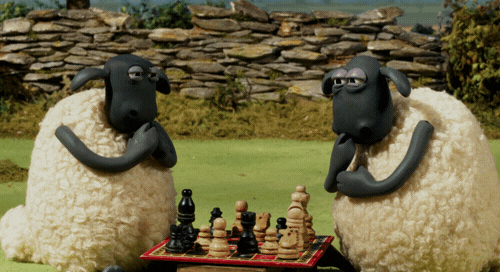Welcome to another weekly edition of Sports-Tech Biz! Every Friday, we learn about intriguing topics related to sports, business, and technology. If you’re reading this online or in a forwarded email, sign up for the newsletter:
Fellow reader,
Do you play on chess.com? I’m looking for some online chess friends. If so, let me know your username by answering this email (I’ll remind you at the end of the story).
Chess has seen an unprecedented rise in popularity during the last few months because of Netflix’s latest TV Show, ‘The Queens Gambit.’
Now, let me tell you, the hype was real:
eBay reported a 273 percent increase in searches for chess sets within ten days of the show's release
The word Chess nearly doubled in Google searches from the previous year.
The Chess.com game app reached the top 5 in the strategy category on many App Stores worldwide.
If you haven't watched the series, I do recommend it. While I enjoyed it, I would've liked to learn more about the game and Chess's history.
Chess is a world that challenges the imagination of individuals due to its strategic beauty—a closed and objective game played on a simple 64 square board designed to test the power of human intuition.
Besides being considered as a sport, such a fascinating world deserves a bit of our attention. Today's magazine article will feature the history, development, and future of Chess.
The History of Chess
Chess was born out of the Indian game chaturanga before the year 600 A.C.
It was a game played like a war. 'Chaturanga' means 'the four divisions': infantry (now known as pawns), cavalry (now knights), elephantry (now bishops), and chariots (now rooks). Besides, there was a King and his advisor (now queen).
People played Chaturanga on an 8x8 board.
The game worked pretty much like today’s chess, but with a lot of different variants.
The Globalization of Chess
Since 600 AC, the game has changed quite a bit. From India, the game spread to Persia, and when the Arabs conquered Persia, Muslims adopted Chess in their culture and consequently spread it to Southern Europe, Asia, and Russia.
Ironically, a few kings and religious authorities in the middle age tried to ban Chess but failed miserably due to its popularity.
Between the 12th and 15th centuries, the game became a subject of art, with boards and pieces decorated in various forms.
The pieces changed shape in the European Catholic cultures — it's why the pieces would often have a religiously Catholic appearance.
Writings on the theory of how to play Chess appeared in the 15th century, and the game made its most extraordinary progress when rules and pieces were standardized.
The Development of Modern Chess
In two-player matches, the first known competition was in 1834 between a few French and British players.
A few tournaments later, some players raised concerns about the players' time to deliberate their moves.
Players took as much as two hours and 20 minutes to think over a single move!
To solve this, they introduced the chess clock and a limited number of moves (i.e., 30 moves)
The first official world champion was Austrian-American William Steinitz in 1886.
Steinitz lost his crown in 1894 to a much younger German mathematician Emanuel Lasker, who maintained this title for 27 years (the longest tenure of all World Champions).
Since then, many historical players have been part of the professional Chess scene, including José Raúl Capablanca, Alexander Alekhine, Bobby Fischer, and the famous Garry Kasparov.
The Future of Chess
Twenty-five years ago, the reigning world chess champion lost a game to a computer for the first time in history.
A supercomputer called "Deep Blue" faced off and beat Garry Kasparov in six games.
The '96 match demonstrated that a new wave was starting to move the chess world, and the role and capabilities of computers and automation in society were shifting.
What is even crazier is that in 2017, a team of scientists at Google created AlphaZero, a self-learning "neural network" (or A.I.) program that surpassed the strongest chess program after just four hours of playing against itself.
Meaning, now, A.I. destroys supercomputers in Chess. And humans? Ha! We can only watch from the sideline.
Reminder:
Don’t forget to answer this email to let me know if you play on chess.com! – I’m looking for some online chess friends 🥺 😅
QUICKIES
🎙 Helping Athletes Make, Manage, and Multiply Money; This week’s Halftime Snack features Amobi Okugo — a professional soccer player, a founder, and a Forbes 30 under 30 member. In our conversation, we talked about the Nigerian culture, time management as a professional player, the story behind Amobi's foundation, myths around the psychology of money, and so much more. Listen on Apple | Spotify | Google.
On the emoji scale, how much did you enjoy today’s newsletter?
🙄 | 😐 | 🙂 | 😃 | 🤩
Until next week,
Ronen Ainbinder
Twitter: @Ronenain
Website: ronenainbinder.com
Book a call with me: superpeer.com/ronen
-
Sports-Tech Biz
Twitter: @sports_techbiz
Instagram: @sportstechbiz
Read more: sportstechbiz.substack.com.
-
Halftime Snacks Podcast










